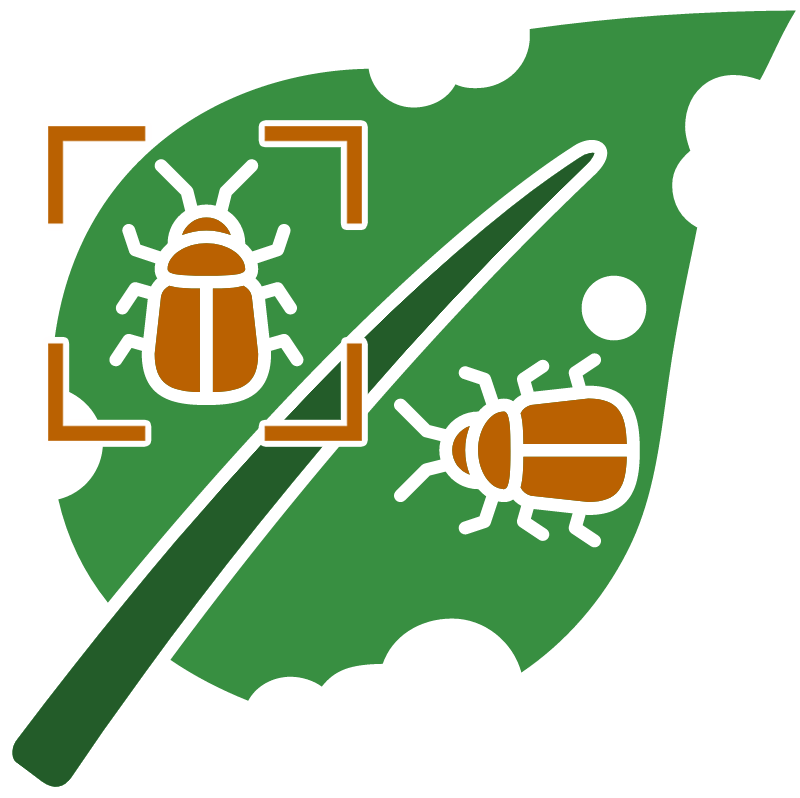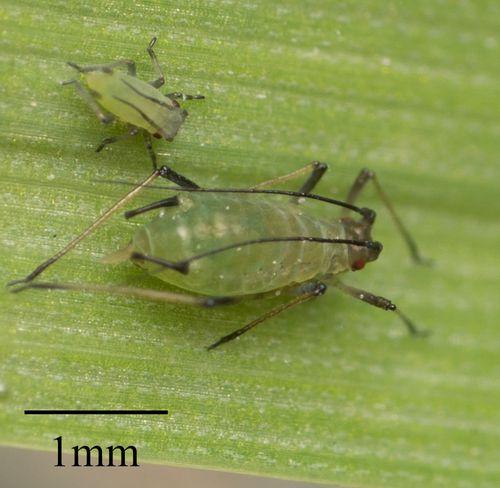English grain aphid (Sitobion avenae)
Biology and life history: English grain aphid is one of the most abundant cereal aphid pests in the inland Pacific Northwest. It is a medium- to large-sized spindle-shaped aphid with black antennae and cornicles and yellowish legs with black joints. They have a wide range of body colors, from orange, reddish-brown, yellow, to yellowish-green. This aphid reproduces parthenogenetically (no sexual phase) during most of the year but can have a sexual generation in the fall. It overwinters as nymphs or eggs on grasses or winter cereals. Eggs hatch in spring to develop winged asexual adults that migrate to crop fields and start infesting wheat or other cereal crops. This aphid begins its annual flights in spring, but later compared to other cereal aphids.
Host plants and crop damage: Due to its direct injury to crops and as a vector of Barley yellow dwarf virus, the English grain aphid is one of the most harmful cereal aphids worldwide. It can feed on a wide range of cultivated cereal crops and non-cultivated grasses. It colonizes leaves and stems (in barley and oats) and heads (in wheat). In addition, this pest may feed on young leaves of fall germinated cereal plants and vector plant viruses at this time.
Management: Except at very high population densities, this aphid in the Pacific Northwest is usually controlled by the natural enemies (ladybug beetles, ground beetles, lacewings, spiders, hoverflies, and parasitic wasps) that also suppress other aphids in the region. Its populations often become large late in the crop cycle when the aphids become abundant and visible in the seed heads. At this stage, however, they produce little damage to the crop. Hence, it is important not to apply broad-spectrum foliar insecticides to protect these beneficial insects. However, if Barley yellow dwarf virus is present during the first few weeks of winter crop emergence in fall, even a low population of this aphid can spread the virus requiring some preventive measures. There are no formal economic thresholds, but 5 to 10 per stem before flowering is a rough treatment guideline.

